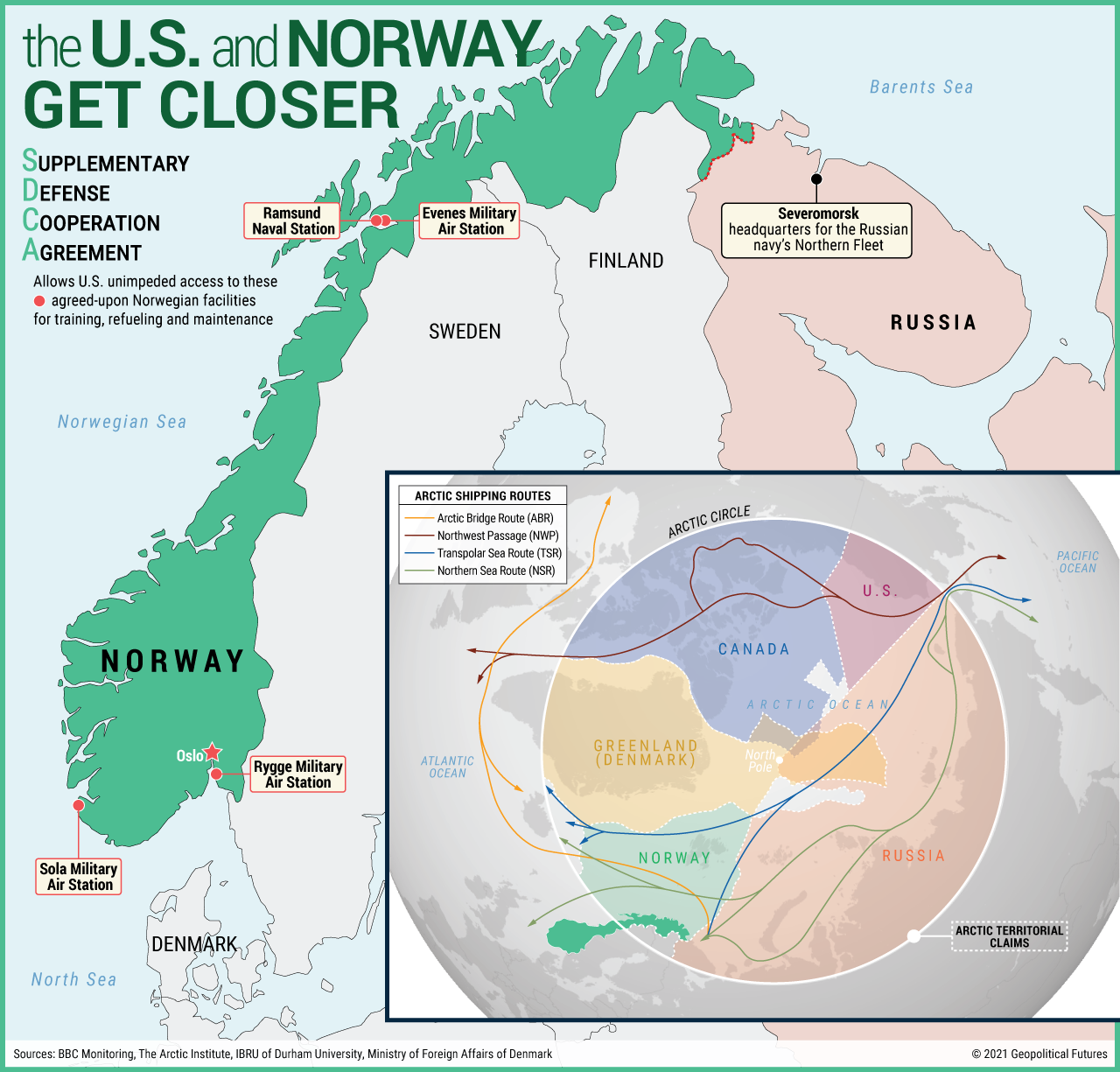Last month, the United States and Norway signed an updated defense deal called the Supplementary Defense Cooperation Agreement. It allows the U.S. to build new facilities at select Norwegian bases and gives the U.S. unimpeded access to and use of the facilities.
The deal was just one example of the increasing defense cooperation between the two NATO allies in recent years. The U.S. Marine Rotational Force Europe regularly deploys Marines to northern Norway for cold weather training. Next year, in fact, Norway will host NATO’s Cold Response drills, which will be attended of course by U.S. forces. Just this week, the USS New Mexico, a nuclear-powered Virginia-class attack submarine, arrived for a port call at a naval base near Tromso in northern Norway.
Their increasing interest in defense coordination is driven primarily by concerns over Russia – specifically, the access of Russian forces to two major northern routes. The Northern Sea Route, which runs along Russia’s Arctic coast, is increasingly opening up because of melting ice caps. The Arctic Bridge Route, which extends between Iceland and the United Kingdom and between Iceland and Greenland, could give Russia access to the Atlantic. The U.S. and Norway hope their cooperation will help stifle Moscow’s incursions in these two strategic pathways.







